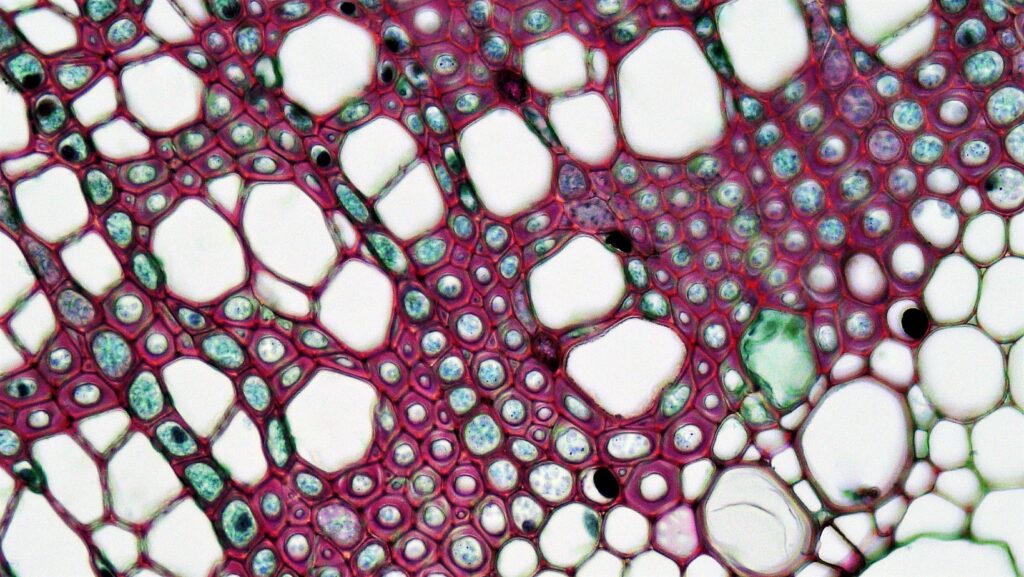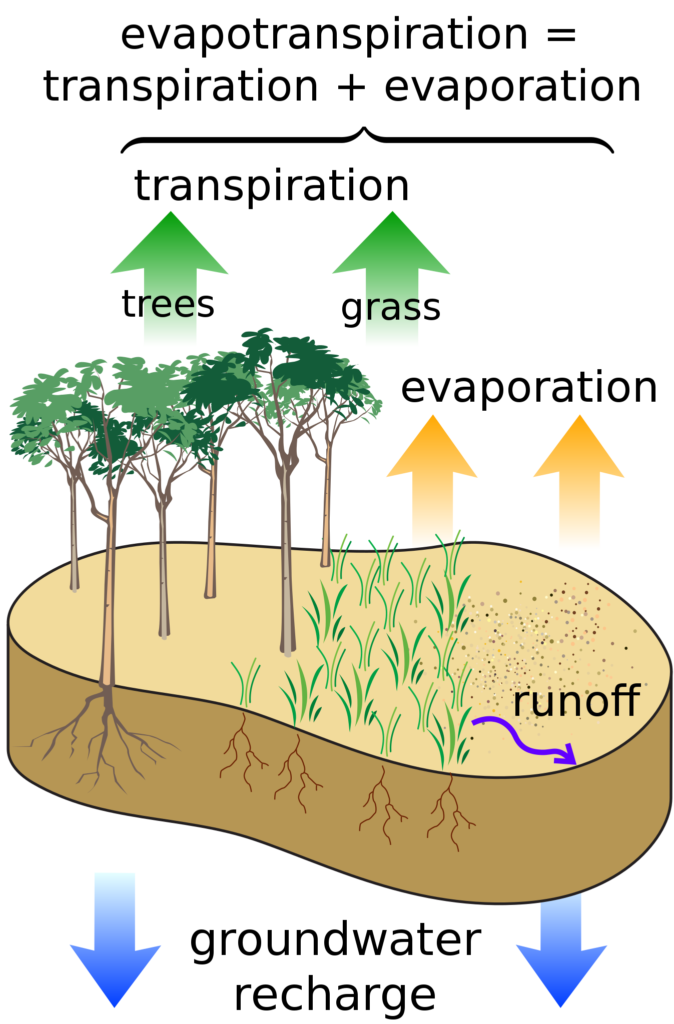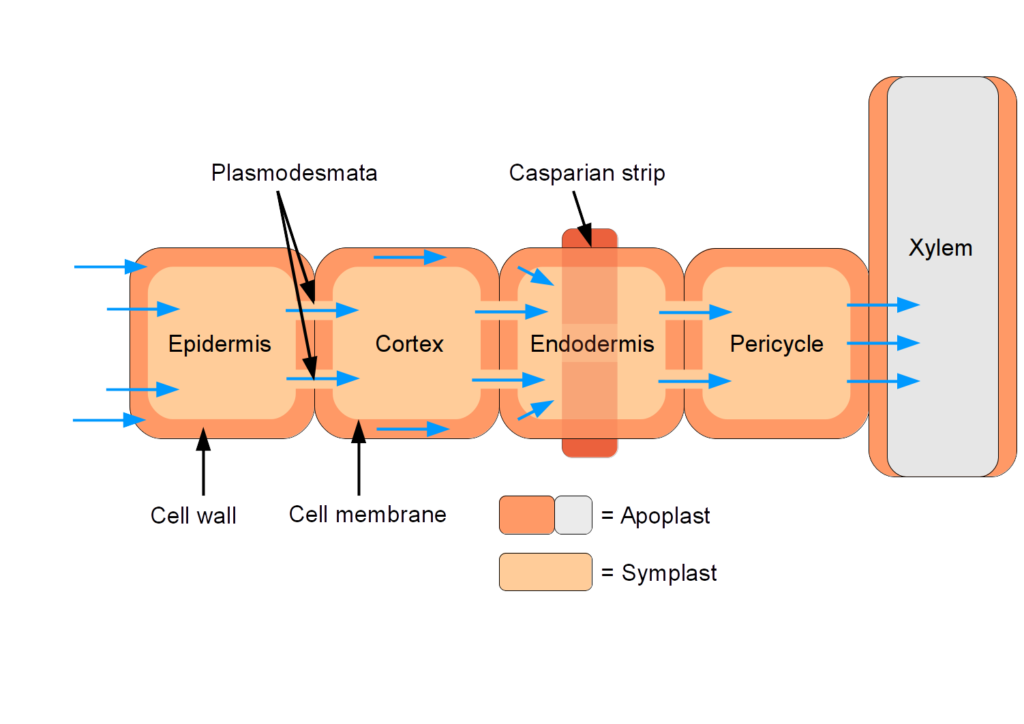
It’s still too cold here in the Pacific Northwest to see much happening outside, so it seems a perfect time to write about something you can’t see anyway. That “something” is the movement of water and dissolved substances through two pathways: the xylem and the phloem. And before you roll your eyes and go watch TikTok videos, keep in mind that learning about these transport systems is critical to understanding how plants work and caring for them appropriately. To prevent brain overload, we’ll focus on how xylem works this month and tackle phloem next month.

Cross section – xylem elements are large, empty circle. Photo courtesy of Wikimedia 
Longitudinal section showing xylem vessels. Photo courtesy of Flickr (Science and Plants for Schools)
Functional xylem is composed of dead, lignified cells connected into a series of tubes that move water one way – from the roots to the leaves. You can think about xylem like a giant straw sucking water out of the soil and moving it into the atmosphere. You’ll find dissolved substances in xylem water, such as soil minerals and root-stored compounds including growth regulators and sugars. Since this is a one-way highway, everything in the xylem ends up at the end of the straw, which is primarily the leaves. Most of the water dissipates into the atmosphere through the stomata (a process called evapotranspiration) and the dissolved substances are left behind.

I mentioned that sugars can be found in the xylem, which will confuse gardeners who correctly associate sugars moving through the phloem. That’s generally true except during late winter when some trees, most famously maples, will produce a sugary sap in the xylem. While the exact mechanism of sap production remains unclear, we know that the sugars are coming from storage sites in the trunk and require a freeze-thaw cycle to enter the one-way xylem highway.

While many people see this process as the plant “wasting” water, it is the only way that soil minerals can reach the leaves. In the summer, evapotranspiration lowers leaf temperature through evaporative cooling. Thus, doing anything to interfere with xylem function (like using antitranspirants) will have a long-term, negative effect on plant health. Likewise, anything in the soil that’s taken up by roots may end up in the leaves – for better or worse.

Schematic view of a Casparian strip. Image courtesy of Wikimedia 
Ring of endodermal cells with Casparian strip (see arrows). Photo courtesy of Flickr (Berkshire Community College)
Gardeners need to think about this last caveat carefully. Plant species are highly variable in their abilities to regulate what goes into the xylem and what is left behind in the root tissue. Regulation is controlled by a barrier called the Casparian strip, which is a ring of living cells that require water (and its contents) to pass through their membranes to enter the xylem. You can think of the Casparian strip as a customs office at a country’s borders: some things are allowed in, and others are forbidden. Depending on how selective this border crossing is, soil contaminants can be left behind in the roots or carried through the plant. This is why it is so very, very, important to have your vegetable garden soils tested for heavy metals and other contaminants, and to take precautions if contaminants are found.

Thank you for sharing this information, essential to living with and caring for vascular plants of all shapes and sizes. The “wasting water” idea is grounded in a lack of knowledge. That so called “wasted” water is what cools the surrounding air as the processes of transpiration or evaporation is putting that water back into atmospheric circulation = no waste at all.
I find it interesting that water can flow up a tree when there is nowhere to go-leaves are not yet on the tree during sapping season. One minor point, the sap flow in maples actually starts in late winter and early spring. By the time the buds start to open (flower or leaf), the sap is no longer good for syrup making.
Thanks for catching that! I had started to type “early spring” and decided to go with “late winter” but forgot to change the adjective.
In terms of water moving upwards, there is always water loss from young twigs and other less protected structures. Pruning during this time will also increase water movement.
What do you make of this article, which summarizes an analysis of fungal networks and concludes that the “woodwide network” among plants and trees may not be as strong as previously believed?
https://gizmodo.com/woodwide-web-fungi-networks-trees-communicate-myth-1850146627
The root-mycorrhizal network is real enough. But plants don’t talk to each other, nor do they act altrusitically to “help” each other.